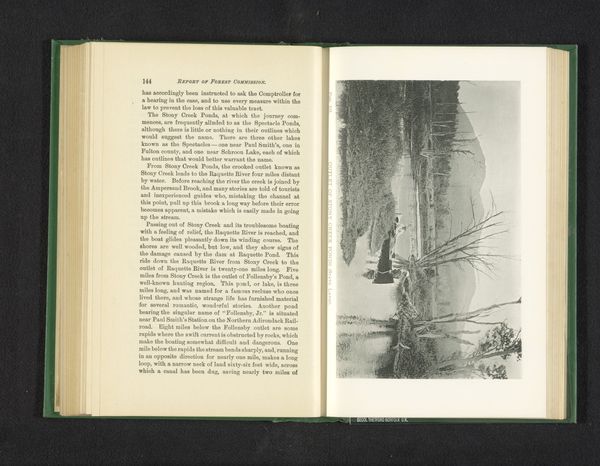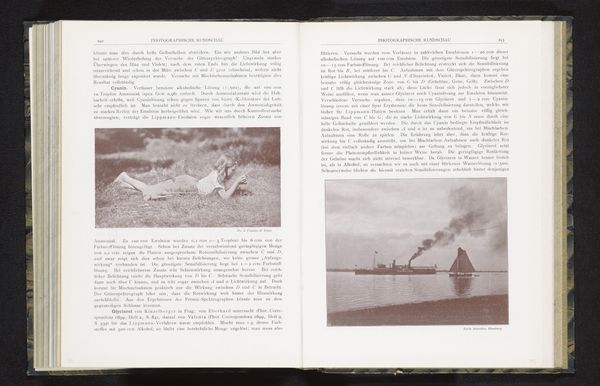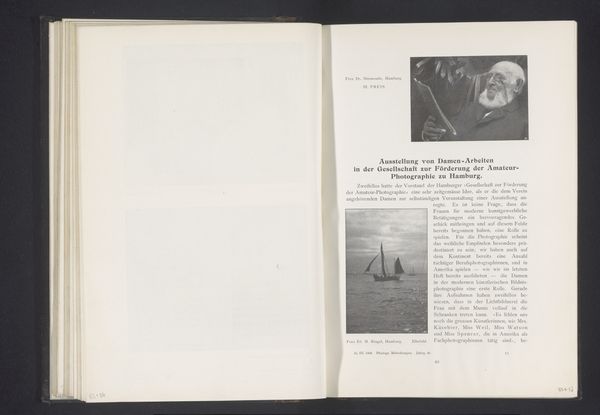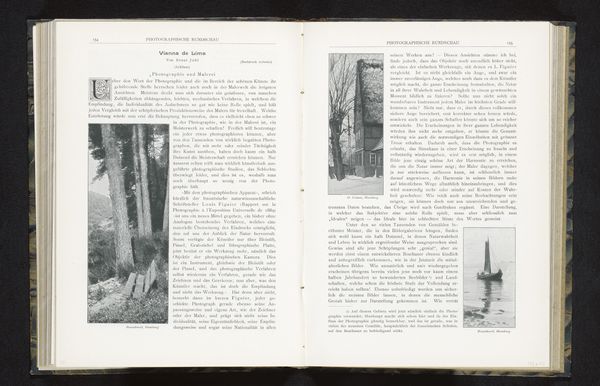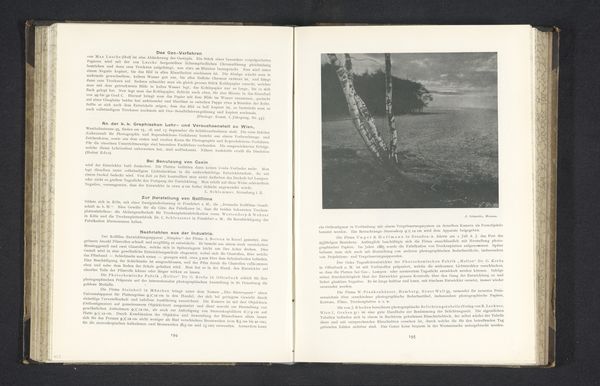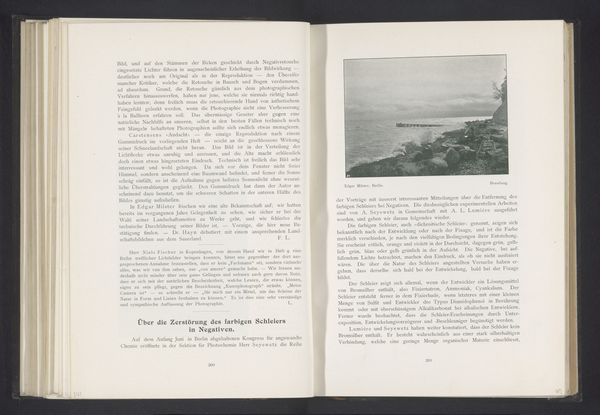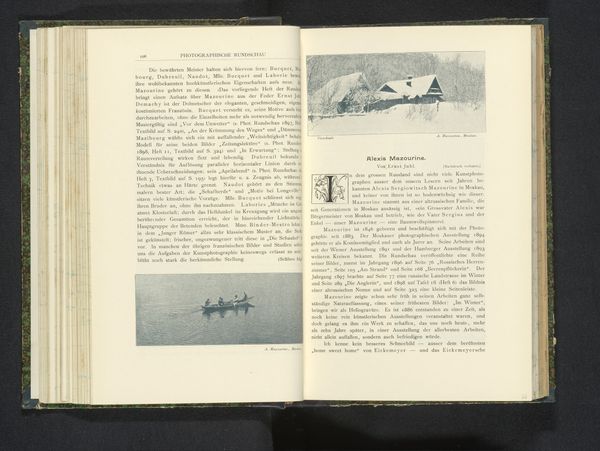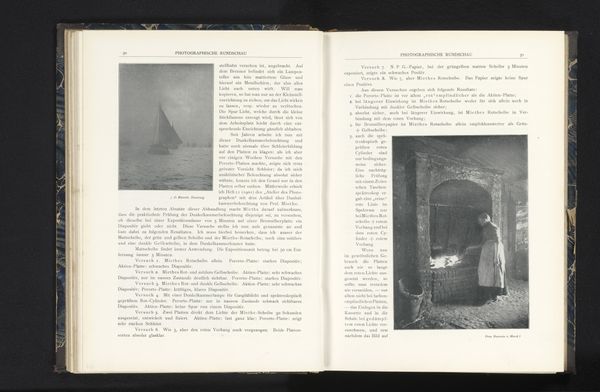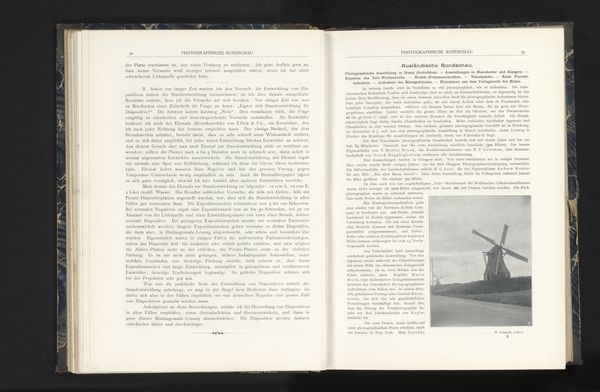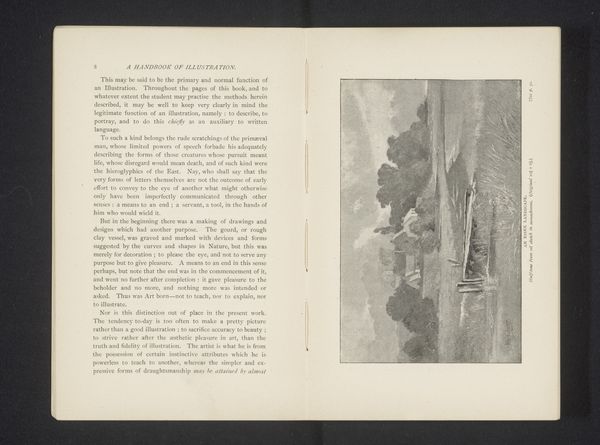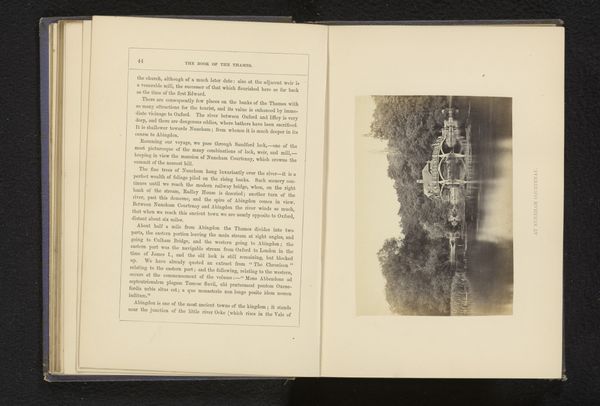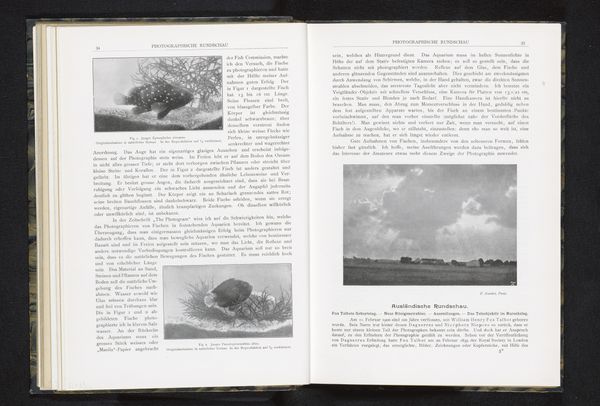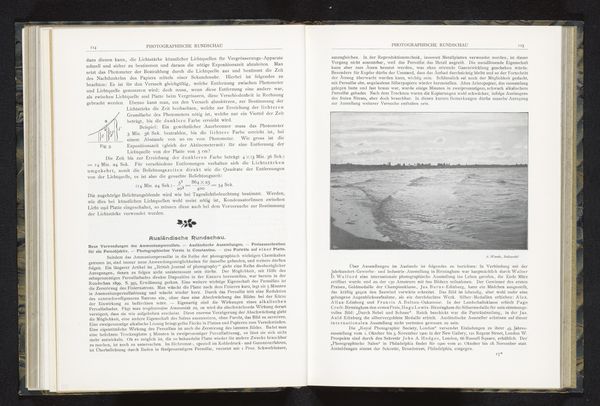
print, photography, gelatin-silver-print
#
still-life-photography
# print
#
landscape
#
german-expressionism
#
photography
#
gelatin-silver-print
Dimensions: height 150 mm, width 88 mm
Copyright: Rijks Museum: Open Domain
Curator: The artwork we're observing is a photograph called "Gezicht op een molen aan het water," which translates to "View of a Mill by the Water," made before 1900 by O. Bozenhardt. It’s a gelatin-silver print. What's your first impression? Editor: Eerie, almost spectral. The grayscale is so stark, and that reflection… it doubles the ghostly feeling. The mill looks like it’s standing between worlds. Curator: That reflective quality is indeed a key aspect. Mills are often symbolic of industry, but also of cycles, of harnessing natural power. What resonates with me is how the stillness of the water seems to imply a contemplation of those forces. The image captures that period as technologies change the very shape of everyday life. Editor: It’s true; mills are such potent symbols, laden with cultural and economic meaning, deeply embedded in the landscape and livelihood. The mirror image adds another layer – are we seeing progress or merely an illusion, a phantom of what was? Curator: It also could echo older beliefs and folklores, like Narcissus reflecting, in his hubris, on his own beauty until oblivion. Or is the mirror implying two worlds connected, material and ethereal, our earth and the world of the departed? Editor: I read that ambiguity as quite powerful, especially framed within the context of photography's rise as a "truthful" medium. This photograph deliberately complicates the notions of authentic representation and manipulation. The social implications here is photography making claims for seeing what’s actually ‘there’ just as those technologies may alter our society fundamentally. Curator: Photography has often been a space to renegotiate the social. It seems very intentional. And looking at this melancholic composition and monochrome palette, I'd venture that "melancholia" here speaks about something larger. How time’s passage impresses into consciousness and the ephemerality of human activity. Editor: A beautiful perspective, the image transcends a simple landscape portrayal into a meditative piece of industrial temporality and the constant changes society faces and even fabricates. Curator: Ultimately, this image acts as a bridge—between time periods, and ways of life—offering us a still point to consider all this movement and transmutation.
Comments
No comments
Be the first to comment and join the conversation on the ultimate creative platform.
